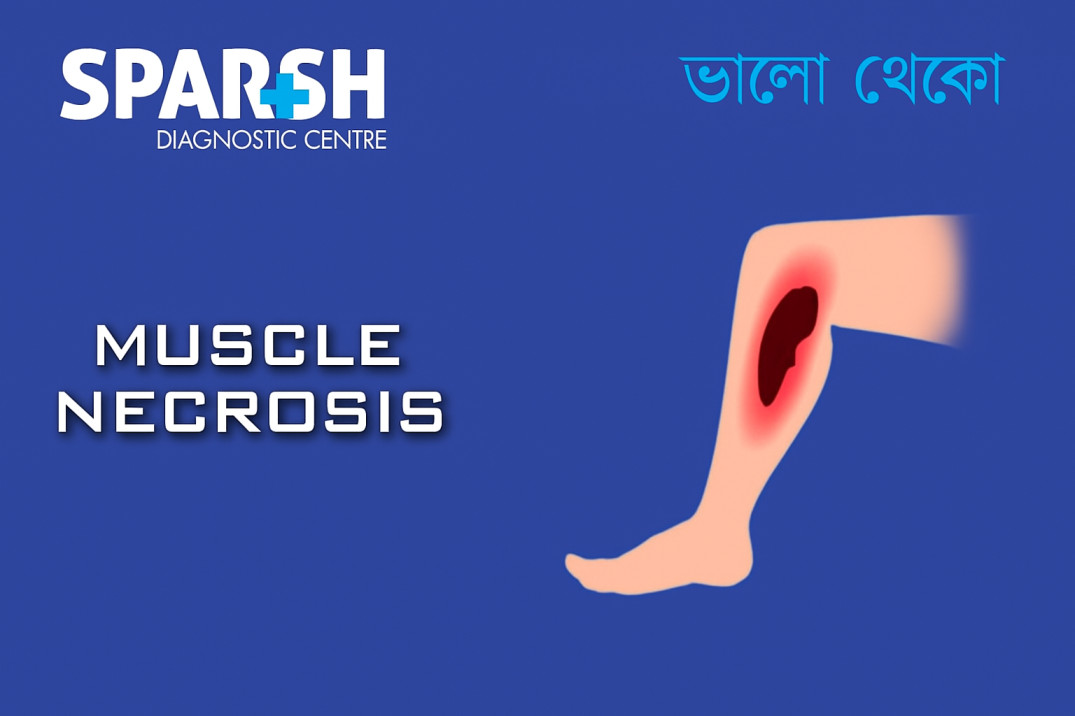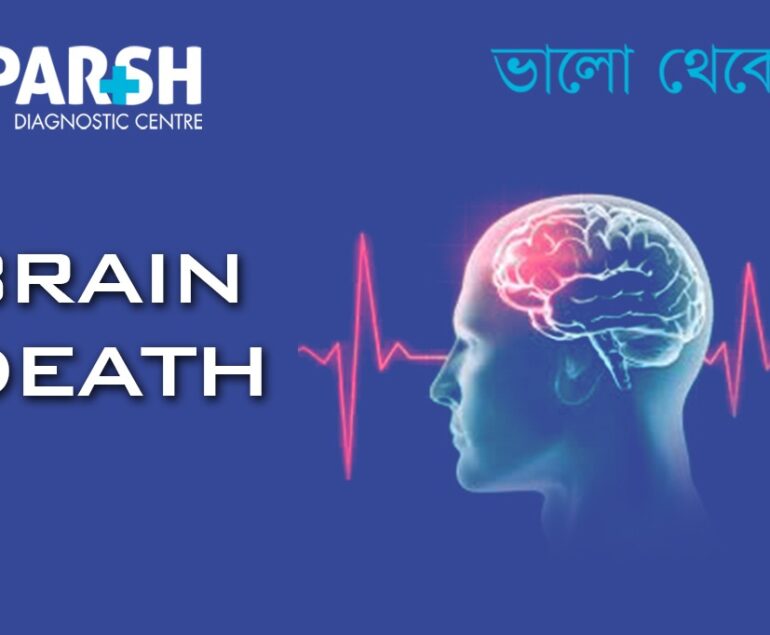Muscle necrosis is a serious medical condition where muscle tissue dies due to inadequate blood flow, trauma, or infection. It can occur in any muscle group and may lead to severe pain, loss of function, and, if untreated, systemic complications like sepsis or kidney failure.
Understanding the causes, risk factors, symptoms, and available treatments for muscle necrosis is vital for timely intervention and recovery. This blog explores muscle necrosis in detail — its mechanisms, diagnostic methods, and the importance of early medical attention.
What Is Muscle Necrosis?
Muscle necrosis refers to the death of muscle fibers due to irreversible damage. When cells in the muscle lose their oxygen and nutrient supply — usually because of interrupted blood flow (ischemia) or direct injury — they begin to die.
This process releases toxic substances into the bloodstream, which can further harm nearby tissues and organs. Depending on the cause, muscle necrosis may develop rapidly (acute necrosis) or gradually (chronic necrosis).
Types of Muscle Necrosis
There are several forms of muscle necrosis, each associated with different underlying causes:
Ischemic Necrosis:
Occurs when the blood supply to muscle tissue is reduced or cut off, leading to oxygen deprivation. Common in conditions like compartment syndrome or arterial occlusion.Traumatic Necrosis:
Results from severe muscle injury such as crush trauma, burns, or accidents that physically damage muscle fibers.Infectious Necrosis (Myonecrosis):
Caused by bacterial infections, particularly Clostridium perfringens (gas gangrene). It spreads rapidly and can be life-threatening.Toxic or Drug-Induced Necrosis:
Certain drugs (like statins) or toxins can damage muscle tissue directly or indirectly, resulting in necrosis.Inflammatory or Autoimmune Necrosis:
Seen in conditions like polymyositis or dermatomyositis, where the immune system attacks muscle tissue.Rhabdomyolysis-Related Necrosis:
Severe muscle breakdown (rhabdomyolysis) can lead to necrosis and kidney damage due to the release of myoglobin into the bloodstream.
Causes of Muscle Necrosis
Muscle necrosis can result from a wide range of causes, including:
Reduced Blood Supply:
Peripheral artery disease, thrombosis, or embolism can deprive muscle tissue of oxygen.Trauma or Crush Injury:
Car accidents, falls, or heavy blows may destroy muscle fibers directly.Infection:
Bacterial infections, especially those producing toxins, can destroy muscle tissue rapidly.Prolonged Pressure:
Lying in one position for too long (pressure ulcers) can restrict blood flow to muscles.Medications and Toxins:
Statins, alcohol, or illicit drugs can trigger muscle cell death in rare cases.Metabolic Disorders:
Diabetes and severe electrolyte imbalances may damage muscles over time.Surgery or Injection Injury:
Improperly administered injections or surgical complications may lead to localized necrosis.
Risk Factors
Certain factors increase the likelihood of developing muscle necrosis:
Long immobilization or coma
Severe trauma or crush injuries
Intravenous drug use
Chronic infections
Use of certain medications (like statins or steroids)
Exposure to toxins
Symptoms of Muscle Necrosis
Early identification of symptoms can prevent complications. Common signs and symptoms include:
Severe muscle pain (often sudden and persistent)
Swelling and tenderness in the affected area
Skin discoloration (reddish, purplish, or black patches)
Loss of muscle strength or movement
Foul-smelling discharge (in cases of infectious necrosis)
Visible skin blisters or ulcers
Dark-colored urine (in rhabdomyolysis due to myoglobin release)
If untreated, muscle necrosis can lead to systemic complications such as sepsis, shock, and acute kidney injury.
Complications of Muscle Necrosis
If not treated promptly, muscle necrosis can cause serious complications, including:
Sepsis:
The spread of infection into the bloodstream.Amputation:
In severe cases, to prevent the spread of infection or gangrene.Renal Failure:
Caused by myoglobin release during muscle breakdown.Multi-Organ Failure:
Due to toxins and inflammatory response.Permanent Muscle Damage:
Loss of strength, function, or deformity in the affected limb.
Diagnosis of Muscle Necrosis
Early and accurate diagnosis is crucial to prevent irreversible damage. Diagnostic evaluation may include:
1. Physical Examination
The doctor checks for swelling, discoloration, tenderness, and loss of function. A history of trauma, infection, or medication use helps identify the cause.
2. Blood Tests
Creatine Kinase (CK): Elevated levels indicate muscle damage.
Myoglobin: Increased in rhabdomyolysis.
C-Reactive Protein (CRP) and White Blood Cell (WBC) count: Suggest infection or inflammation.
Renal Function Tests: To detect kidney injury.
3. Imaging Tests
MRI: Detects soft tissue damage and inflammation.
CT Scan: Evaluates deep tissue involvement.
Ultrasound: Identifies fluid accumulation or abscesses.
X-ray: Useful for detecting gas in tissues (seen in gas gangrene).
4. Tissue Biopsy
A biopsy may confirm necrosis and identify the underlying cause (infectious, autoimmune, or toxic).
Treatment of Muscle Necrosis
The treatment depends on the cause and extent of muscle damage. The primary goals are to remove dead tissue, control infection, and restore function.
1. Medical Management
Antibiotics:
Broad-spectrum antibiotics are given immediately in cases of infection (e.g., clostridial myonecrosis).Pain Management:
Analgesics and anti-inflammatory drugs relieve discomfort.IV Fluids:
To prevent dehydration and support kidney function.Monitoring Kidney Health:
Dialysis may be required in severe rhabdomyolysis.
2. Surgical Treatment
Debridement:
Removal of dead or infected tissue to prevent spread.Fasciotomy:
Relieves pressure in compartment syndrome to restore blood flow.Amputation:
Considered only when tissue death is extensive and threatens life.
3. Hyperbaric Oxygen Therapy
Used in some cases of infectious muscle necrosis (especially gas gangrene) to enhance oxygen supply and promote healing.
4. Supportive and Rehabilitation Therapy
Once stabilized, patients may require:
Physical therapy to regain strength and mobility.
Nutritional support for muscle repair.
Regular follow-ups to monitor healing and prevent recurrence.
Prevention of Muscle Necrosis
While not all cases can be prevented, these steps can reduce the risk:
Manage chronic diseases like diabetes and vascular disorders.
Avoid prolonged immobilization — change positions regularly.
Treat infections early and avoid self-medicating.
Stay hydrated and maintain electrolyte balance.
Use medications responsibly under medical supervision.
Protect muscles from severe trauma or overexertion.
Maintain good wound hygiene to prevent bacterial entry.
Prognosis and Recovery
The outlook for muscle necrosis depends on the underlying cause, speed of diagnosis, and extent of damage.
Early treatment usually leads to full recovery.
Delayed intervention may result in permanent disability or even death in cases of systemic infection.
Rehabilitation is crucial for restoring muscle strength and function after necrosis.
When to See a Doctor
Seek immediate medical help if you experience:
Sudden, severe muscle pain
Rapid swelling or discoloration of the skin
Signs of infection (fever, pus, odor)
Weakness or inability to move a limb
Dark urine or reduced urination
Prompt medical attention can prevent life-threatening complications.
FAQs About Muscle Necrosis
1. Is muscle necrosis reversible?
Once muscle cells die, they cannot regenerate. However, early treatment can prevent further damage and allow surrounding healthy tissue to compensate.
2. Can muscle necrosis spread?
Yes. Infectious necrosis, particularly caused by bacteria, can spread rapidly through surrounding tissues and even enter the bloodstream, leading to sepsis.
3. What is the difference between muscle necrosis and rhabdomyolysis?
Rhabdomyolysis refers to the breakdown of muscle fibers releasing myoglobin, which can cause kidney injury. Muscle necrosis involves the death of muscle tissue, which may or may not include rhabdomyolysis.
4. What does muscle necrosis look like on the skin?
Affected areas may appear reddish, purplish, or black, often swollen and tender, sometimes with fluid discharge or blisters.
5. How long does it take to recover from muscle necrosis?
Recovery time varies based on severity — minor cases may take weeks, while severe necrosis (especially post-surgery) may take several months of rehabilitation.
6. Can muscle necrosis occur after an injection?
Yes. Improper injection technique or use of certain medications can cause localized tissue death at the injection site.
7. How is muscle necrosis related to compartment syndrome?
Compartment syndrome causes increased pressure within muscle compartments, cutting off blood supply. Without treatment, this can lead to muscle necrosis.
8. Can exercise cause muscle necrosis?
Extreme overexertion, especially in hot conditions or without hydration, may lead to rhabdomyolysis — a precursor to necrosis in severe cases.
9. Is muscle necrosis life-threatening?
Yes, particularly if caused by infection or if left untreated. It can lead to sepsis, organ failure, or death.
Muscle necrosis is a severe but treatable condition when diagnosed early. Recognizing symptoms such as sudden pain, swelling, and skin discoloration is essential for timely intervention. Treatment may include antibiotics, surgery, and supportive therapies aimed at preserving muscle function and preventing complications.
If you experience unexplained muscle pain or swelling, consult your doctor immediately.
Visit Sparsh Diagnostic Centre for comprehensive diagnostic services and expert medical care to ensure early detection and management of muscle-related conditions.
#BhaloTheko
Disclaimer:
No content on this site, regardless of date, should ever be used as a substitute for direct medical advice from your doctor or other qualified clinician.

![]()






[…] Muscle Necrosis: Irreversible damage to muscle tissue. […]